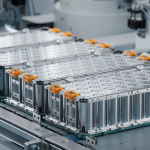Servers are the backbone of modern digital systems, and just like any electronic device, they need a reliable power source to function. That’s where the server power supply comes in. It may not be the most talked-about component, but it plays a critical role in keeping servers running smoothly, securely, and without interruptions.
What is a Server Power Supply?
A server power supply comes as a unit of hardware that provides electrical power to all components of a server. It converts electricity received from a wall outlet (AC power) to a much lower and more stable voltage (DC power) which is used by internal components such as motherboard, CPU, RAM, disk drives, and fans.
Unlike a computer power supply, a server power supply is able to weight heavier loads, run 24 hours a day, seven days a week, and should be much more reliable-yet-efficient. Other sums in proactive features range from redundancy to remote monitoring.
Why is the Power Supply So Important?
Typically, servers are never turned off, whether for web hosting, data storage, or network management. In the event of a power failure, the server is shut down instantaneously, subsequently causing data loss, service interruption, or even system crash, especially in places where uptime means everything.
Such qualities in a power supply are a very important aspect of its design. The intent is to give durable supplies with stable voltages and backup options. A quality power supply will deliver consistent voltages, preventing sensitive server devices from damages caused by sudden power surges or failures.
Key Features of Server Power Supplies
Here are some important features that make server power supplies different and more powerful than standard computer PSUs:
- High Power Output: Servers need more power to run than a typical PC. Server power supply (เครื่อง สำรอง ไฟ server, which is the term in Thai) units often have a power rating from under 500 W to over 2000 W depending upon the configuration.
- Redundancy: Most server power supplies have redundancy, meaning that two or more connected power supply units run in parallel together; on failure of one, the other automatically takes over without shutting the system down.
- Hot-swappable: Redundant PSUs are normally hot-swappable, so they can be replaced with the system still operational and so save downtime.
- Efficiency Ratings: Find power supplies rated by 80 PLUS, which means they take in electricity from the wall and converted in usable form to heat and waste less.
- Form Factor compatibility: Server chassis come in defined sizes, and power supplies have to fit them. Common types are ATX, SFX, or proprietary types that can only be used by brand-name servers.
- Remote Monitoring and Control: Senior server PSUs allow the IT team to monitor the power consumption remotely, watch temperature and give an alert service for failure.
Types of Server Power Supplies
There are a few main types of server PSUs:
- Single Power Supply: Basic servers may use a single power supply. It’s simple and cost-effective but lacks backup.
- Modular Power Supply: Allows users to connect only the cables they need, improving airflow and reducing clutter.
Conclusion
Whether you are clocking in hours on a small business server or running the whole show at a data centre, acquiring a high-quality power supply that is also efficient and reliable should be a must. Not only does it keep your server running without any interruptions, but it also works to make sure that no untimely power disruptions impair your valued data and hardware.



